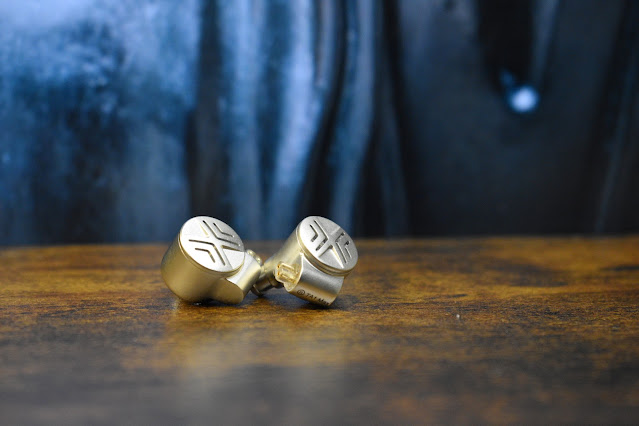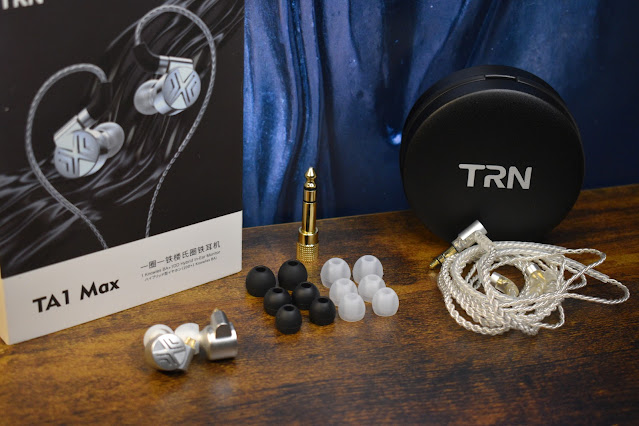- Get link
- X
- Other Apps
English | Español
Also available on YouTube in Spanish: Acho Reviews YouTube
The TRN TA1 Max have been sent to me by Linsoul in exchange for the publication of this review, they have not made any specific requests, therefore I will do my usual best to be as unbiased as possible in this review, although you should always consider the fact that I have not had to spend any of my own money on these IEMs.
As always, I will leave a non-affiliate link to the TA1 Max via Linsoul, as it is the least I can do.
TRN TA1 Max on Linsoul: https://www.linsoul.com/products/trn-ta1-max?variant=42780357296345
Intro…
Lately I have had quite a few new revisions of older models come across my desk, such as the T1S and the CRA+, just to name a few. Today's set is also a set that I reviewed some time ago and has been revamped into a new release.
I will do some brief comparisons between the original TA1 and the new TA1 Max as I go along but, to be honest, apart from some brief listens this week to compare, it has been quite a while since I spent time with the originals.
Once thing I will say in favour of TRN is that the new model keeps almost the same price as the original, around 35€, which not only keeps them well inside my favoured sub 50€ category, but also means that they have introduced the upgrades without increasing the price.
Presentation…
The IEMs arrive in a fairly simple box with an image of them on the cover. Inside the box we find the IEMs in their cutouts located at the top, with a hard shell, round, storage/travel case below, sporting the TRN logo on the lid.
Inside the travel case we find the cable and attached to the bottom of the foam holding the IEMs, there is a box containing the remaining accessories, these being 2 different types of tips, with 3 sizes of each included.
This is not a lot of content but is enough to be able to enjoy the IEMs straight out of the packet, with the hard storage case being a nice touch.
Build & Aesthetics…
The TA1 Max are the same shape and style as the original TA1, round with a small cylindrical shape offset to the top which holds the connector for the cable. They are slightly larger in size than the originals, not by a huge amount but certainly enough to be noticeable. Personally I find them to be comfortable but that is going to depend on each person and their anatomy.
One thing that has changed quite a bit in comparison to the original TA1 is the looks. While the shape is still the same and the colour is also very similar (slightly more matte on the Max), gone is the anime art (on the Japanese version of the originals, or plane silver on the regular version) and has been replaced with an X type design that has cutouts and a grille below.
They do state that these are a “Half Open Balanced Pressure Relief Cover” and the vents are in fact functional, giving them an open back look and feel.
I actually like the aesthetics, preferring them over the originals, and feel that they have put some thought and originality into the design.
Sound…
Let’s do the usual and show a graph of the TA1 Max vs the original TA1, plus my personal preference target, just as a reference point before we start.
(all measurements of IEMs I review can be found and compared on achoreviews.squig.link)
I am going to go through my usual steps but straight away we can see that the overall curve is very similar to the original, with a few tweaks.
Starting off with the subbass, I really can’t hear any lack here but I must say that it is difficult to actually focus on the subbass due to the rather large midbass boost. If I actually pplay subbass tones, then maybe I could start passing comments but test tones are not really something I listen to. Therefore, let’s just say that I don’t think that people will complain about any lack of subbass on these IEMs.
Moving up into the midbass, here is where the low end is dominated by a strong focus on these frequencies. Now, as most of you probably know already (if you follow my reviews), I am not someone who likes an excessive amount of bass and yes, I find the amount to be excessive on the TA1 Max.
However, I must also say that the control over these midrange frequencies is impressive. With such an elevated frequency response in this area, it is very easy for a set of IEMs to lose control and become undefined and muddy in the low end, even carrying the excess through into the lower mids. The TA1 Max do a very good job of avoiding this problem.
There are certain tracks where I find the bass to be overwhelming, such as “No Sanctuary Here” (and quite a few more), but at the same time, it does let me distinguish between the notes and while the midbass is definitely the center of attention, it does still let other frequencies through. I feel that many people will find the pressure of the midbass slam very impressive but personally I find it tiring.
In the mids, there is a clear drop in the center but again, they surprisingly keep the mids present, and do so without overdoing the boost at the higher end of the mids. The higher mids follow a similar tuning to the original TA1’s but they have smoothened them out a little. Even the peak at almost 5kHz is not offensive to me, I don’t notice any harshness, and I am quite sensitive to those specific frequencies.
The higher ranges are also quite calm and collected. There are no annoying peaks, at least to my ears, and sibilance is kept in check without being overly dull. I would still say that the upper ranges are a little behind the lower ranges, with the bass being the center of attention, but they are surprisingly present, I expected much worse.
The soundstage is also not bad, on the higher end of average for a set of IEMs, although they do not sound as “open” as the aesthetics may lead one to believe. While the image placement isn’t going to win any awards for being the most precise, it is also by no means bad. Things are where they should be and details can be easily identified in the background. In fact, while these are also not the most detailed of IEMs, they are not bad in this regards either. I wouldn’t say you are going to be blown away by things you have never heard before but they certainly don’t come across as one dimensional and lacking.
Conclusion…
Sadly for the TA1 Max, they are a sound signature that I am not a fan of, meaning that they weren’t off to a very good start. However, they have still surprised me by managing to keep an overall presence and clarity to the rest of the frequencies, they are not just a wall of bass.
If you are someone who likes having a lot of slam in the midbass range, then I certainly think that you should give these a listen as they are quite impressive, especially with regards to how they create such a sensation of moving air in those ranges without really taking over the rest of the spectrum. Yes, these are on the bassy/warm side, which is to be expected, but they still present you with plenty of coherency in the rest of the music.
Personally, I just don’t get on with this tuning but I know that and my personal tastes aren’t something that can lead me to say that these are not good IEMs, as they are.
All FR measurements of IEMs can be viewed and compared on achoreviews.squig.link
All isolation measurements of IEMs can be found on achoreviews.squig.link/isolation
To comment or contact, visit any of the following social media platforms:





.png)

